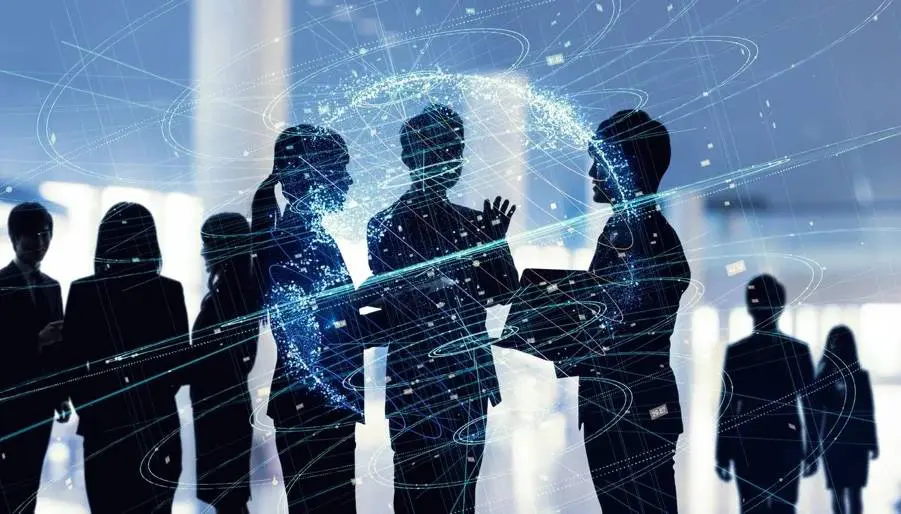
Building a Powerful Culture Amidst a Digital Tsunami
By Beth Pritchard, CEO of StoneMason Global
In today’s hyper-connected world, organizations are riding a wave of relentless digital disruption—a digital tsunami that reshapes how we work, communicate, and lead. While innovation surges forward, culture often becomes the unseen casualty. But in truth, a healthy, adaptive culture is the cornerstone for thriving in this environment—not a casualty of it.
Here’s how organizations can build and sustain a healthy culture amidst the digital deluge, with clear actions under each principle.
1. Anchor to Purpose, Not Just Productivity
Why it matters:
Digital tools can accelerate output but may dilute meaning. In the race to optimize and automate, employees can lose sight of the “why” behind their work.
Actions to Take:
- Reinforce mission and values regularly in meetings, internal communications, and onboarding.
- Connect roles to impact by highlighting how each function contributes to the broader vision.
- Celebrate purpose-driven wins, not just metrics.
2. Prioritize Human Connection Over Digital Efficiency
Why it matters:
Remote work, AI tools, and constant notifications can create isolation. Genuine human relationships—key to trust and engagement—can erode.
Actions to Take:
- Schedule intentional human moments: virtual coffee chats, team retreats, or on-site days focused on connection.
- Equip leaders with empathy training to manage distributed teams more effectively.
- Encourage voice and visibility—create forums where all employees can be heard, not just the most digitally savvy.
3. Promote Digital Well-being
Why it matters:
The “always-on” digital environment leads to burnout, information overload, and decreased focus.
Actions to Take:
- Establish digital boundaries: define “quiet hours,” when not necessary discourage weekend emailing, and model healthy behavior from the top.
- Offer digital hygiene training: teach employees how to manage notifications, schedule focused work time, and use tech intentionally.
- Leverage tools mindfully: implement platforms that simplify rather than complicate workflows.
4. Foster Psychological Safety
Why it matters:
Innovation and adaptation—core to digital transformation—require environments where employees feel safe to fail, speak up, and challenge the status quo.
Actions to Take:
- Recognize and reward vulnerability—highlight stories where employees took smart risks, even if the result was imperfect.
- Train managers to listen actively, respond constructively, and avoid punitive responses to reasonable failure focusing more on the lessons learned.
- Use retrospectives or “learning labs” to reflect openly on digital initiatives and what can be improved.
5. Encourage Continuous Learning and Adaptability
Why it matters:
As digital tools evolve, stagnant skillsets and rigid mindsets can become cultural liabilities.
Actions to Take:
- Create learning ecosystems: provide access to digital learning platforms, workshops, and peer-led sessions.
- Reward curiosity and experimentation: celebrate those who test new tools or propose process improvements.
- Foster a growth mindset culture—remind teams that discomfort often precedes growth.
6. Balance Transparency with Focus
Why it matters:
Digital tools increase access to information, but too much transparency can cause decision paralysis or overwhelm.
Actions to Take:
- Design clear communication hierarchies—what should be shared, when, and with whom.
- Use asynchronous channels for updates, and reserve meetings for collaboration and strategy.
- Clarify priorities and noise filters—ensure employees know what to ignore and what truly matters.
7. Model Culture from the Top
Why it matters:
Culture isn’t built by tools—it’s shaped by people, especially leaders. Employees mirror what they see (including what behaviors leaders tolerate) and are held accountable for. Not what they’re told. Leaders must “walk their talk.”
Actions to Take:
- Leaders must embody the culture they want to see: empathy, balance, curiosity, integrity.
- Provide consistent messaging across channels: emails, videos, town halls—all should reflect the organization’s cultural pillars.
- Hold leaders accountable for the emotional tone and health of their teams—not just deliverables.
Conclusion: Leading Through the Surge
The digital tsunami is not slowing down—it’s gaining strength. But with intentionality, organizations can ride the wave rather than be overwhelmed by it. By prioritizing human-centered principles, establishing strong practices, and cultivating resilient mindsets, companies can build cultures that don’t just survive the digital era—they thrive in it.
Culture is not what technology makes possible. It’s what leaders choose to make essential.
© Beth Pritchard and StoneMason Global, LLC 2025. Unauthorized use and/or duplication of this material/content without express and written permission from Beth Pritchard, the content author and/or owner, is strictly prohibited. Excerpts and links may be used, provided that full and clear credit is given to Beth Pritchard and StoneMason Global with appropriate and specific direction to the original content.
